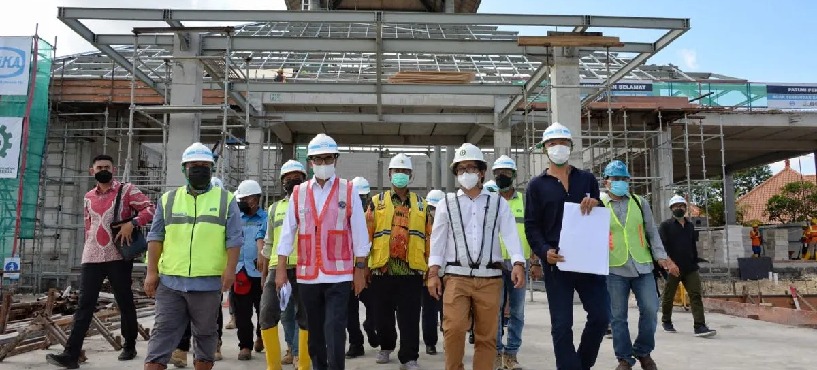Introduction:
Bali, with its breathtaking landscapes and unique culture, has become a popular destination for those looking to invest in real estate. Building a villa in Bali can be a rewarding venture, whether it’s for personal use, rental income, or as a long-term investment. However, the process involves several critical steps and requires careful planning. In this guide, we’ll outline the key steps and offer tips for successfully constructing a villa in Bali.
Section 1: Initial Planning and Research
Understand the Regulations
Before embarking on your villa construction project, it’s essential to understand the local regulations and legal requirements. Bali has specific zoning laws, building codes, and property ownership rules that must be adhered to.
Tips
- Consult a Legal Expert: Hire a local lawyer who specializes in property law to help navigate the legal landscape.
- Research Zoning Laws: Ensure that the land you are interested in is zoned for residential use and meets all regulatory requirements.
- Understand Ownership Structures: Foreigners cannot directly own land in Bali but can use leasehold agreements or set up a local company (PT PMA) to acquire property.
Section 2: Securing the Land
Find the Right Location
Location is a crucial factor in the success of your villa project. Consider proximity to beaches, tourist attractions, amenities, and infrastructure when selecting a site.
Tips
- Hire a Reputable Agent: Work with a trustworthy real estate agent who understands the local market and can help find the right property.
- Conduct Due Diligence: Verify land titles, check for any encumbrances, and ensure that the seller has the right to sell the property.
- Visit Multiple Sites: Visit various locations to compare options and assess their potential for your project.
Section 3: Designing the Villa
Hire an Architect and Designer
A well-designed villa not only enhances your living experience but also increases the property’s value. Collaborate with experienced architects and designers who understand Balinese architecture and modern design trends.
Tips
- Choose Local Expertise: Local architects and designers are familiar with the climate, materials, and regulations, making them valuable partners in your project.
- Incorporate Balinese Elements: Integrate traditional Balinese design elements such as open spaces, natural materials, and indoor-outdoor living to create an authentic and appealing villa.
- Plan for Sustainability: Consider eco-friendly features like solar panels, rainwater harvesting, and energy-efficient appliances to reduce your environmental impact and operating costs.
Section 4: Obtaining Permits
Secure Necessary Permits
Obtaining the required permits is a critical step in the construction process. This includes building permits, environmental permits, and other regulatory approvals.
Tips
- Work with Local Authorities: Engage with local government offices to understand the permit requirements and process.
- Prepare Documentation: Ensure you have all necessary documents, including land titles, design plans, and environmental impact assessments.
- Allow Time for Processing: Permit approvals can take time, so factor this into your project timeline to avoid delays.
Section 5: Construction
Hire a Reliable Contractor
Selecting a reliable contractor is crucial for ensuring that your villa is built to high standards and within budget. Vet contractors carefully and check their references and previous work.
Tips
- Sign a Clear Contract: Have a detailed contract outlining the scope of work, timelines, payment schedules, and penalties for delays.
- Monitor Progress: Regularly visit the construction site to oversee progress and address any issues promptly.
- Quality Control: Ensure that the construction materials and workmanship meet the required standards. Consider hiring an independent inspector for periodic checks.
Section 6: Interior Design and Furnishing
Design for Comfort and Style
The interior design and furnishing of your villa play a significant role in its appeal and functionality. Work with professional interior designers to create a space that is both stylish and comfortable.
Tips
- Choose Durable Materials: Select materials and furniture that can withstand Bali’s tropical climate and high humidity.
- Focus on Functionality: Ensure that the layout and furnishings meet your needs and enhance the livability of the space.
- Add Local Touches: Incorporate local art, textiles, and decor to create a unique and culturally rich ambiance.
Section 7: Managing the Property
Maintenance and Management
Once your villa is built and furnished, ongoing maintenance and management are essential to preserve its condition and maximize its value. This is especially important if you plan to rent it out.
Tips
- Hire a Property Manager: Consider hiring a professional property management company to handle maintenance, guest services, and marketing.
- Regular Maintenance: Schedule regular maintenance checks and repairs to keep the villa in top condition.
- Marketing and Rental: If you plan to rent out the villa, develop a marketing strategy and list the property on popular rental platforms to attract guests.
Conclusion:
Building a villa in Bali is a significant investment that requires careful planning, research, and execution. By following these key steps and tips, you can navigate the complexities of the construction process and create a beautiful, functional, and valuable property. Whether for personal use or as an investment, a well-constructed villa in Bali can offer long-term rewards and a unique tropical living experience.





